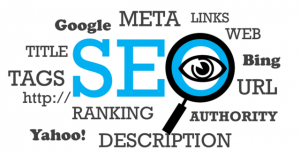When it comes to designing a website, mistakes can feel unavoidable. It’s like a twist in the tale; even when you’re practically sure that everything is perfect, chances are that you still slip up. Don’t worry, though—we’ve got you covered! Read on to discover 18 of the most common website design mistakes and learn how to prevent them.
1. Are You Making These Common Website Design Errors?
Many websites have the potential to be amazing but end up falling short due to some common design errors. If you’re not careful, your website could be one of them. Here’s a list of the most common errors to avoid:
- Content Clutter: Content clutter is when there is too much information competing for attention. This can make it harder for visitors to find what they are looking for and leave quickly.
- Confusing Navigation:Create a Website Navigation that is simple and straightforward and let your visitors easily find the information they’re looking for.
- Poor Typography:Using the wrong font, size and color can make your website look unprofessional and unappealing. Choose a typeface and color palette that fit with your website’s overall design.
When creating a website, it’s important to have an effective design strategy. Pay attention to details that will make a difference to the user’s experience, such as fonts, visuals, spacing and structure. This way, your website will be well-designed and functional, making it easier for visitors to use.
Don’t let common design errors ruin the look and feel of your website. Make sure you double-check all aspects of your website and make sure everything is working correctly and looks great!

2. Identifying & Rectifying Common Web Design Mistakes
Sub-optimal web designs cost businesses, both through their own limited success, and through the customer experience. To ensure the success of your website, it’s important to identify any weak points in your design, as well as knowing what commonly trip up other web designers.
These common web design mistakes include:
- Not using responsive design: Websites that aren’t designed with responsive principles in mind, often break on mobile devices, and are not optimized for search engine results.
- Too much clutter: Having too many distractions on your website can make it unclear where you want customers to look first, or even make them leave the site quickly.
- Lack of calls-to-action: Without a call-to-action, you won’t be able to move visitors to take the desired action.
Rectifying these common mistakes is relatively straightforward, but it’s vital in ensuring the success of your website. Monitor customer feedback and interactions with your website and be willing to make refinements in order to ensure a quality experience. Utilizing website optimization tools can also help identify potential design problems and track how visitors are interacting with the website.

3. Avoid These 18 Common Web Design Blunders
Having an outstanding website for your business or brand is critical for success. Taking the time to ensure that your website does not have any glaring design flaws takes precedence before launching it. Here are some web design blunders that should be avoided at all costs:
- Lack of Colors: Websites should be aesthetically pleasing, vibrant, and well-designed. Having only black, white, and grey colors can easily deter and disengage visitors. Make sure to incorporate various colors, to avoid making your site look dull and monotonous.
- Bad Color Combinations: Even while using colors, it is important to make sure they are complementary and don’t clash with one another. This is essential to help visitors see and process your information better.
- Pointless Animations/Backgrounds: Avoid having long showy animations or loud background music. This automatically distracts viewers from your content.
Not tailoring your website for all devices is also a major mistake. Many of us are active on different gadgets such as laptops, mobiles, and tablets. Having a website that can be adjusted to fit multiple devices, is essential for ensuring there’s no distorted viewing of the content. Additionally, having small and illegible font sizes is a mistake that should also be strictly avoided. The font size should be neither too large, nor too small, and the font should also be easily legible. Lastly, make sure that the contact information is clear and visible. Contact information helps build trust and credibility between the customer and your website. That’s why it should be prominently displayed on the website.
By being mindful of all these design elements, you can create an excellent website experience for your visitors, and elevate your overall branding.
4. Unlocking the Potential of Good Web Design
The potential of good web design has the ability to turn digital dreams into reality. In order to unlock this potential, creativity, technical acumen and a plan are the ingredients to success.
Start by determining the core elements that make up good web design. This basic framework for the website will establish the visual style and the overall feel of the website, as well as how things are organized and interacted with.
The next key to is to utilize the most up-to-date technologies. This means only using the latest versions of HTML and CSS so that the website is optimized for all the different browsers and devices that people use. There are several timesaving tools for dealing with these technologies that should be used.
Finally, one should strategically plan the website’s content and layout. The navigation should be logical and user-friendly as to not confuse visitors, while there should also be plenty of space on the page for content and images. A clear goal is necessary in order to make sure the website meets the goals of the creator.
- Determine core elements
- Utilize the most up-to-date technologies
- Strategically plan content and layout
Avoiding these 18 common website design mistakes will ensure your website is professional, visually appealing and designed with user experience in mind. Get started now and you’ll be on your way to having a modern and beautiful website that you (and your customers) will love.











Hello there! I know this is kinda off topic nevertheless I’d figured I’d ask.
Would you be interested in exchanging links or maybe
guest writing a blog post or vice-versa? My site covers a lot of the same topics as
yours and I feel we could greatly benefit
from each other. If you are interested feel free to
shoot me an e-mail. I look forward to hearing from you!
Wonderful blog by the way!
Hi there would you mind letting me know which
webhost you’re working with? I’ve loaded your blog in 3 completely different internet
browsers and I must say this blog loads a lot quicker then most.
Can you suggest a good hosting provider at a honest price?
Cheers, I appreciate it!
Aw, this was a very nice post. Spending some time and actual effort to
generate a good article… but what can I say… I put things off a whole lot and never seem to get anything done.
Magnificent beat ! I wish to apprentice even as you amend your website, how can i subscribe for a weblog website?
The account helped me a applicable deal. I have been tiny bit acquainted of
this your broadcast offered vibrant transparent
idea
Hi, I do think this is a great blog. I stumbledupon it 😉 I may revisit once again since i have book marked it.
Money and freedom is the greatest way to change, may you be rich and continue to
guide other people.
I agree with everything you’ve said in your post; it’s clear that they’re all very persuasive and will work. Nevertheless, the posts are too short for newcomers; could you maybe make them a little longer the next time? I’m grateful for the post.
Just as much as I did, I relished what you accomplished here. Your language is elegant and the drawing is enticing, yet you appear rushed to get to the next thing you should be providing. If you keep this walk safe, I’ll come back more often.
Hey, cool post You can check if there’s a problem with your website with Internet Explorer. Because of this issue, many readers will overlook your excellent writing because IE is still the most popular browser.
Your blog is a hidden gem.